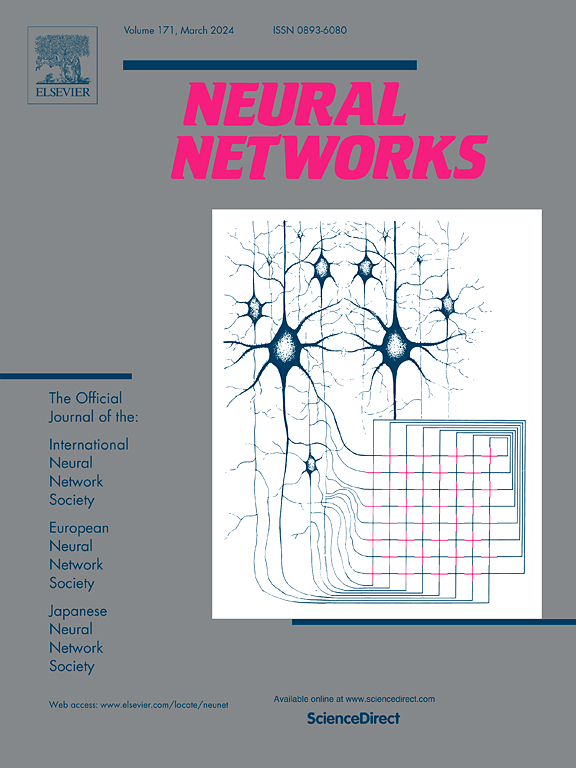协作大型和小型语言模型,实现多模式紧急谣言检测
IF 6
1区 计算机科学
Q1 COMPUTER SCIENCE, ARTIFICIAL INTELLIGENCE
引用次数: 0
摘要
在当前的数字时代,多模式应急谣言正在蔓延,造成了重大的破坏和负面影响。大多数现有的方法都是利用单个小语言模型(slm)或大语言模型(llm)来探索谣言检测,取得了一定程度的成功,但存在潜在的问题。基于slm的方法由于其有限的知识和能力已经达到了瓶颈。相比之下,法学硕士在深度分析方面具有独特的优势,弥补了法学硕士的不足;然而,他们很难选择和整合分析来得出适当的结论。此外,最近关于多模态特征融合的工作仍然很肤浅,限制了这些模型充分理解和识别谣言的能力。在这项工作中,我们提出了用于多模态紧急谣言检测(M2ERD)的协作大语言和小语言模型。具体来说,它由两个主要部分组成。首先,llm基于多角度提示生成多维推理,slm从中有选择性地获得谣言检测的见解。其次,多源跨模态渗透融合网络既实现了多维理据等辅助信息的单向融合,又实现了文本与图像之间的完全互补。综合实验证明了M2ERD在微博、RumorEval和Pheme数据集上的谣言检测的有效性,与所有基线相比,准确率提高了2.6%,f1得分提高了1.9%。我们在https://github.com/youchengyan/M2ERD上发布代码和数据。本文章由计算机程序翻译,如有差异,请以英文原文为准。
Collaborate large and small language models for multi-modal emergency rumor detection
Multi-modal emergency rumors are spreading in the current digital era, causing significant disruptions and negative impacts. Most existing methods focus on exploring rumor detection using individual small language models (SLMs) or large language models (LLMs), achieving a certain degree of success but with underlying issues. Approaches based on SLMs have reached a bottleneck due to their limited knowledge and capacity. In contrast, LLMs have unique strengths in deep analysis that compensate for the weaknesses of SLMs; however, they struggle to select and integrate analyses to draw appropriate conclusions. Furthermore, recent works on multi-modal feature fusion remain superficial, limiting the ability of these models to fully comprehend and identify rumors. In this work, we propose Collaborate Large and Small Language Models for Multi-Modal Emergency Rumor Detection (M2ERD). Specifically, it consists of two main components. First, LLMs generate multi-dimensional rationales based on multi-perspective prompts, from which SLMs selectively derive insights for rumor detection. Second, a multi-source cross-modal penetration fusion network not only accomplishes unidirectional fusion of auxiliary information such as multi-dimensional rationales but also achieves complete mutual complementation between text and the image. Comprehensive experiments demonstrate the effectiveness of M2ERD for rumor detection on Weibo, RumorEval, and Pheme datasets, achieving a 2.6% improvement in accuracy and a 1.9% improvement in F1-score compared to all baselines. We release the code and data at https://github.com/youchengyan/M2ERD.
求助全文
通过发布文献求助,成功后即可免费获取论文全文。
去求助
来源期刊

Neural Networks
工程技术-计算机:人工智能
CiteScore
13.90
自引率
7.70%
发文量
425
审稿时长
67 days
期刊介绍:
Neural Networks is a platform that aims to foster an international community of scholars and practitioners interested in neural networks, deep learning, and other approaches to artificial intelligence and machine learning. Our journal invites submissions covering various aspects of neural networks research, from computational neuroscience and cognitive modeling to mathematical analyses and engineering applications. By providing a forum for interdisciplinary discussions between biology and technology, we aim to encourage the development of biologically-inspired artificial intelligence.
 求助内容:
求助内容: 应助结果提醒方式:
应助结果提醒方式:


